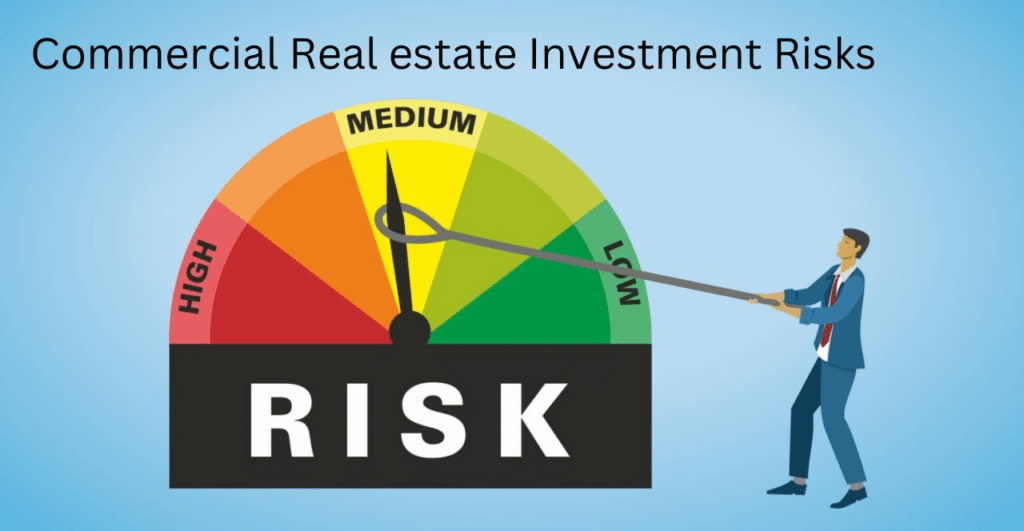Risk factors in REIT investments

Investing in Real Estate Investment Trusts (REITs) offers a lucrative avenue for generating passive income and diversifying investment portfolios. However, like all investments, it comes with its own set of challenges and pitfalls.
This blog post aims to shed light on the various risk factors associated with REIT investments, offering investors insights into what they might encounter and how to navigate these hurdles effectively.
Risk Factors: An Overview
Understanding the risk factors in REIT investments is essential for any investor looking to explore this sector. While REITs can provide robust returns, several key risks need to be considered to make informed decisions.
Market volatility, interest rate fluctuations, and the quality of property management all play integral roles in the performance of a REIT. By delving into these risk factors, investors can better prepare for the ups and downs of the real estate market.
Additionally, sector-specific risks, such as changes in real estate laws and regulations, can significantly impact REITs depending on their niche, be it residential, commercial, or industrial properties.
Therefore, a comprehensive understanding of these challenges is crucial for investors aiming to mitigate potential losses and capitalize on opportunities within the real estate market.
Interest Rate Sensitivity
One of the paramount risks facing REIT investors is the sensitivity of these trusts to interest rate movements. REITs often rely on borrowing to finance property acquisitions, making them susceptible to rising interest rates.
An increase in interest rates can lead to higher borrowing costs for REITs, which can, in turn, affect their cash flow and distributions to shareholders.
Furthermore, when interest rates rise, the allure of fixed-income investments often increases, potentially leading to a decrease in demand for REIT shares and consequently, a decline in share prices.
Market Volatility
Volatility in the real estate market is another significant risk factor for REIT investments. Economic downturns can lead to decreased occupancy rates, lower rents, and ultimately, reduced income for these trusts.
On the other hand, economic upswings can result in improved performance. Thus, the cyclic nature of the real estate market necessitates a strategic approach to investing in REITs, with a long-term perspective to weather the market's highs and lows.
Geopolitical events and unexpected global occurrences, such as pandemics, can also contribute to market volatility, adding another layer of risk for REIT investors.
Management and Operational Risks
The quality and expertise of management are crucial in navigating the complex landscape of real estate investments. Poor property management can lead to suboptimal property performance, affecting the overall profitability of the REIT.
Additionally, operational risks, such as failing to comply with regulatory requirements or managing tenant relationships effectively, can have adverse impacts on a REIT's success.
Investors should thoroughly assess the management team's track record and operational strategies of a REIT before committing their capital.
Concentration and Diversification Risks
Investing in REITs that are overly concentrated in a specific geographical area or sector exposes investors to higher levels of risk. For instance, a REIT focusing solely on office properties may suffer if the demand for office spaces declines.
Diversification across various property types and locations can mitigate this risk, spreading potential losses and capitalizing on different market conditions.
Therefore, examining the portfolio diversification of a REIT is a critical step in mitigating concentration risk.
Liquidity Risk
Some REITs, especially non-traded ones, may present liquidity risks, making it challenging for investors to sell their shares quickly at a fair price. This can be problematic in scenarios where capital needs to be accessed promptly.
Traded REITs, while generally more liquid, can still face market conditions where selling shares might result in losses. Understanding the liquidity profile of a REIT is essential for investors aiming to align their investment strategies with their financial goals and liquidity needs.
Leverage Risk
The use of leverage, or borrowed capital, to finance property acquisitions is a common strategy among REITs. While this can enhance returns in favorable market conditions, it also amplifies losses during downturns, posing a significant risk to investors.
Evaluating a REIT's debt levels and its approach to leveraging is vital for understanding the potential risks and rewards of an investment.
Investing in REITs carries a unique set of risks that investors must carefully consider. By understanding and managing these risks, investors can better position themselves to capitalize on the opportunities presented by the real estate market. Pivotal to this endeavor is conducting thorough due diligence and adopting a long-term perspective, ensuring that REIT investments align with one's investment goals and risk tolerance.

Related